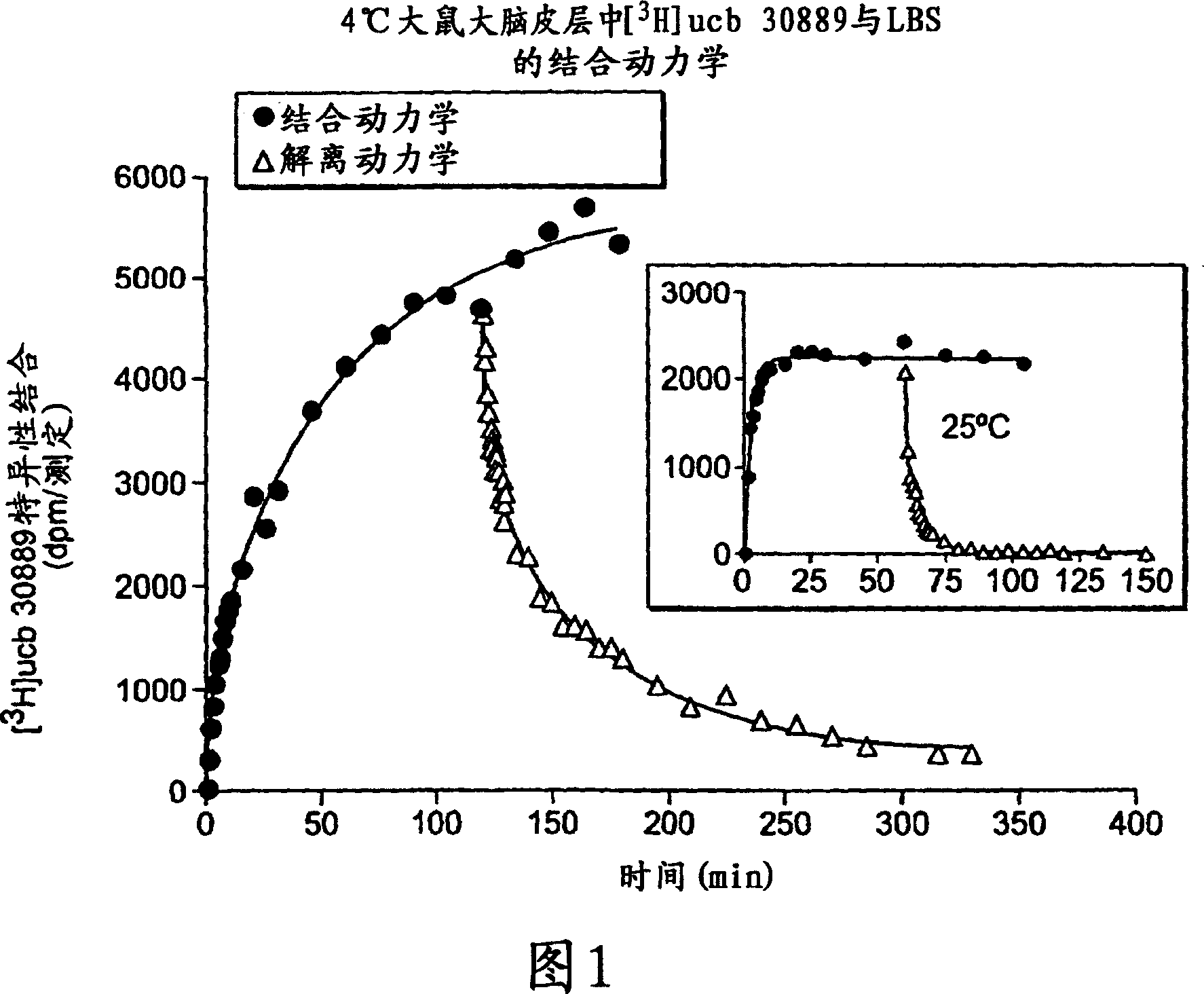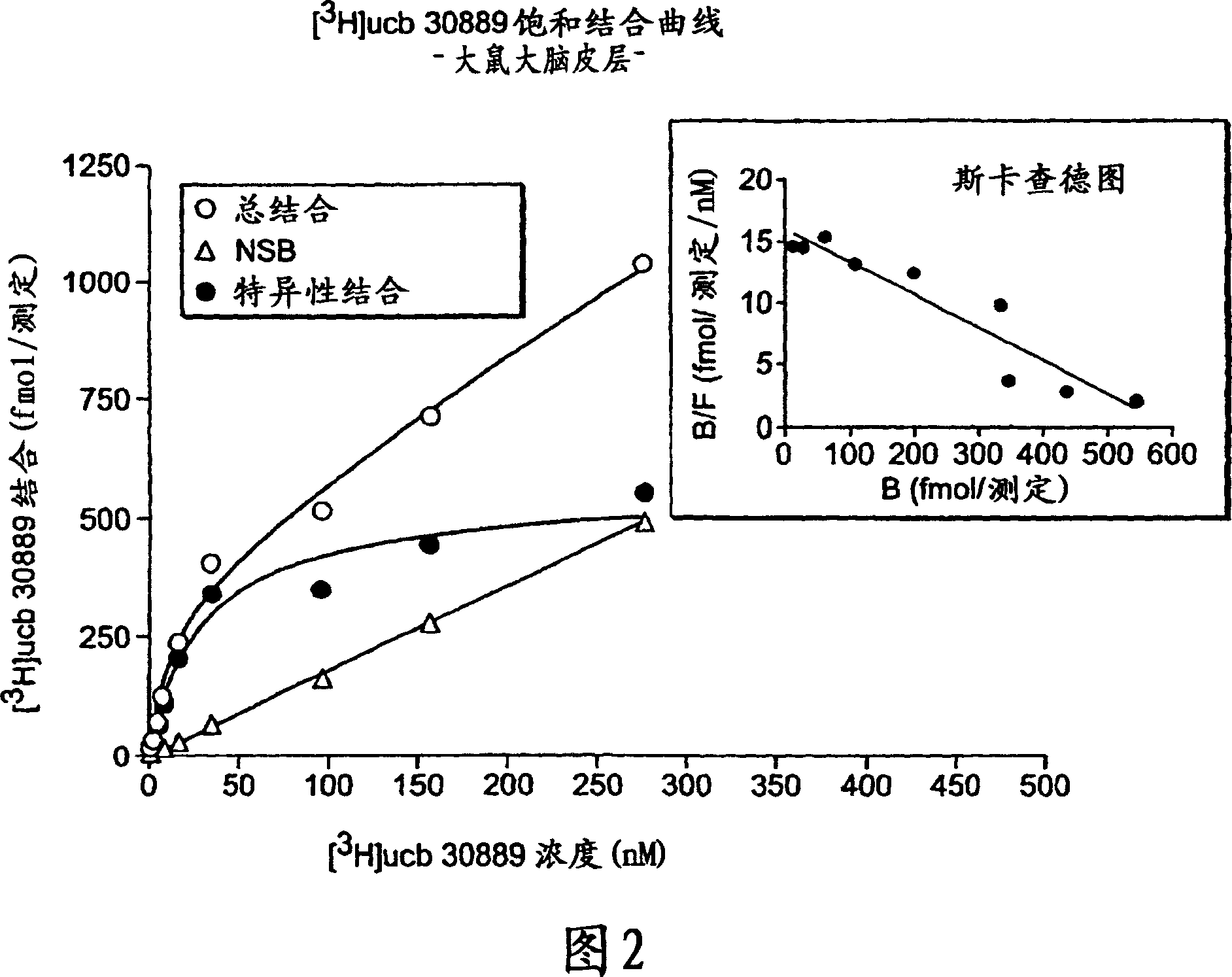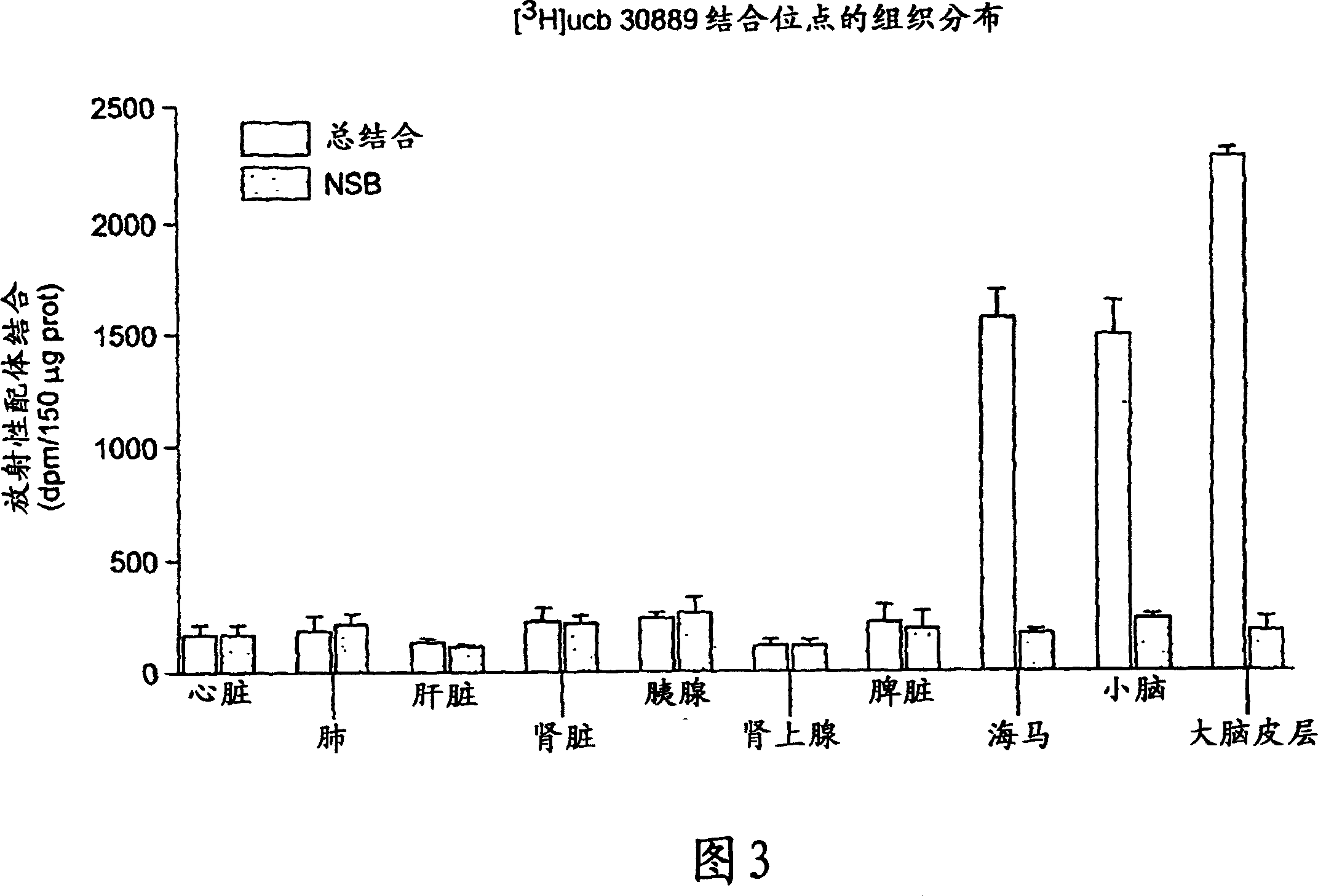Methods for the identification of agents for the treatment of seizures, neurological diseases, endocrinopathies and hormonal diseases
A technology for neurological diseases and endocrine diseases, which can be used in the preparation methods of peptides, chemical instruments and methods, and pharmaceutical formulations, etc., and can solve problems such as adverse effects on neurotransmission
- Summary
- Abstract
- Description
- Claims
- Application Information
AI Technical Summary
Problems solved by technology
Method used
Image
Examples
Embodiment 1
[0198] Example 1. Development of Levetiracetam Analogs for Binding Studies
[0199] LEV binding has been shown to be preferentially localized to specific binding sites in the brain (levetiracetam binding site or LBS: Noyer et al., Euro. J. Pharmacol. 286:137-146. (1995); Gillard et al. 2003)). However,[ 3 H]LEV exhibits only micromolar affinity for this site, making it unsuitable for in-depth characterization. This example describes the [ 3 H]ucb 30889, a conjugate of (2S)-2-[4-(3-azidophenyl)-2-oxopyrrolidin-1-yl]butanamide, an analogue of levetiracetam nature. Binding experiments were performed on crude rat meninges at 4°C as described by Noyer et al. (Euro. J. Pharmacol. 286:137-146 (1995)). The incubation time used for the equilibrium study was 120 minutes. For kinetic and competition studies, use a solution containing 2mM Mg 2+ [ 3 H]ucb 30889 (30Ci / mmol). Localization of LBS in brain substructures was assessed by autoradiography of 25 μm thick sections incubated ...
Embodiment 2
[0206] Example 2. Cellular and subcellular distribution of LBS
[0207] For in situ identification and characterization of LBS, the [ 3 H]ucb 30889 maps LBS in the brain and studies its cellular and subcellular distribution. For rat brain autoradiography, 25 μm sections were treated with 1.3 nM [ 3 H]ucb 30889 was incubated in 50 mM Tris-HCl buffer (pH 7.4) at 4°C for 120 minutes. Binding assays for rat meninges as well as various neuronal cell lines were performed under similar conditions. Non-specific binding was determined by including 1 mM levetiracetam in the assay. For photolabeling, the membrane was treated with 40 nM [ 3 H]ucb 30889 was incubated in the same buffer at 4° C. for 120 minutes, followed by 30 minutes of UV light irradiation (Fuks et al., Eur. J. Pharmacol. 478: 11-19 (2003)).
[0208] For rat brain autoradiography, 25 μm sections were treated with 1.3 nM [ 3H]ucb 30889 was incubated in 50 mM Tris-HCl buffer (pH 7.4) at 4°C for 120 minutes. Figure 7 ...
Embodiment 3
[0218] Example 3. LBS over SV2A
[0219] In this example, biochemical characterization of LBS in rat brain led to studies identifying potential candidate LBS proteins for cloning and binding characterization. The SV2 protein family was analyzed as candidates for targeting LBS based on the membrane-integrated nature of the proteins, brain-specific expression, apparent size, and synaptic vesicle localization. Accordingly, the SV2 protein was cloned and assayed for LBS ligand binding.
[0220] Material:
[0221] Levetiracetam and derivatives were synthesized at UCB Pharma (Braine-I'Alleud, Belgium). [ 3 H]ucb 30889, (2S)-2-[4-(3-azidophenyl)-2-oxopyrrolidin-1-yl]butanamide (32 Ci / mmol) was purchased from Amersham Biosciences (Roosendaal, The Netherlands) custom markings. The monoclonal antibody against the SV2 protein developed by Buckley and Kelly (Buckley et al., J.Cell.Biol., 100, 1284-94 (1985)) was developed from NICHD and sponsored by University of Iowa, Department of ...
PUM
 Login to View More
Login to View More Abstract
Description
Claims
Application Information
 Login to View More
Login to View More - R&D
- Intellectual Property
- Life Sciences
- Materials
- Tech Scout
- Unparalleled Data Quality
- Higher Quality Content
- 60% Fewer Hallucinations
Browse by: Latest US Patents, China's latest patents, Technical Efficacy Thesaurus, Application Domain, Technology Topic, Popular Technical Reports.
© 2025 PatSnap. All rights reserved.Legal|Privacy policy|Modern Slavery Act Transparency Statement|Sitemap|About US| Contact US: help@patsnap.com



